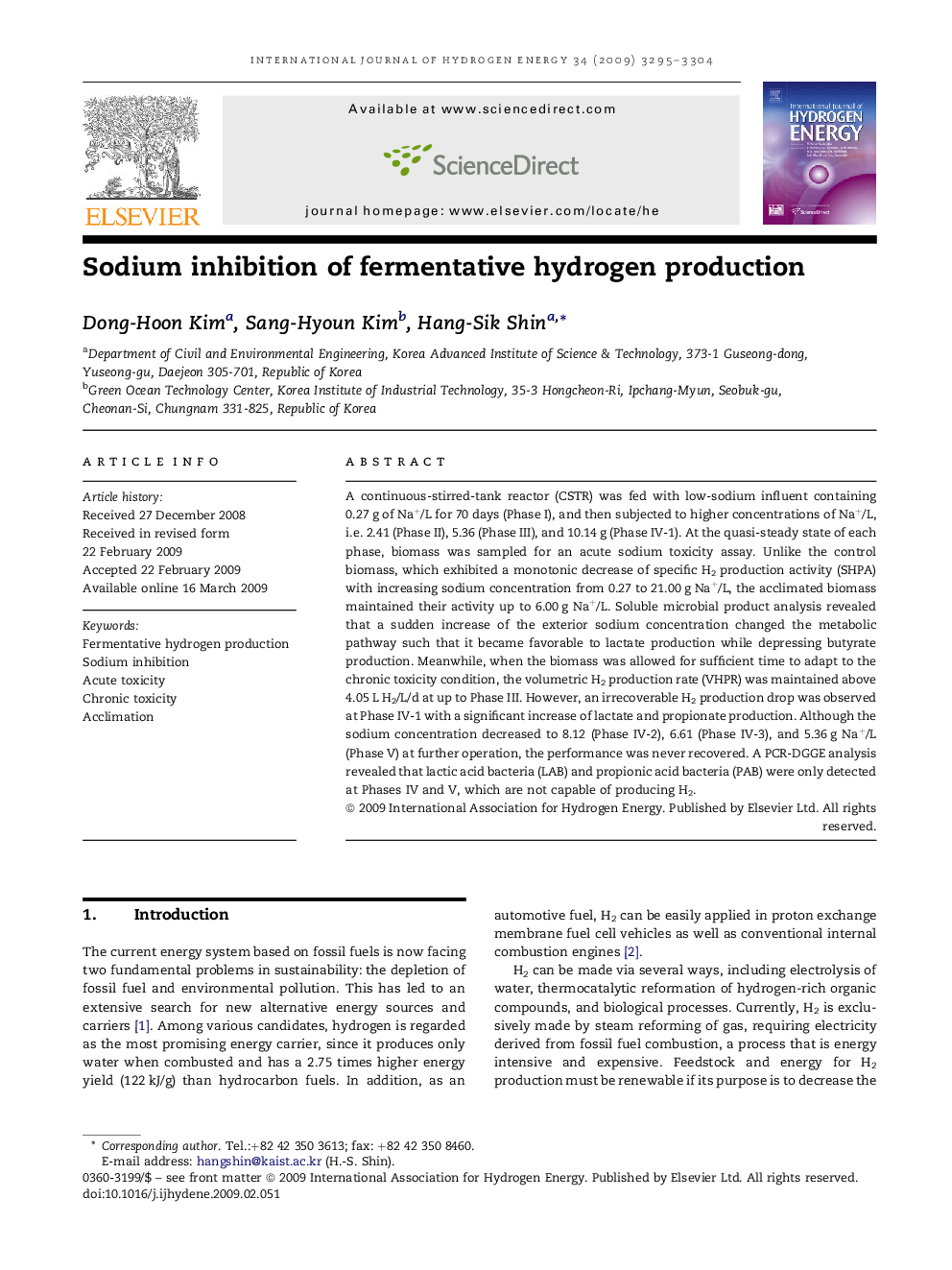| کد مقاله | کد نشریه | سال انتشار | مقاله انگلیسی | نسخه تمام متن |
|---|---|---|---|---|
| 1274029 | 1497634 | 2009 | 10 صفحه PDF | دانلود رایگان |

A continuous-stirred-tank reactor (CSTR) was fed with low-sodium influent containing 0.27 g of Na+/L for 70 days (Phase I), and then subjected to higher concentrations of Na+/L, i.e. 2.41 (Phase II), 5.36 (Phase III), and 10.14 g (Phase IV-1). At the quasi-steady state of each phase, biomass was sampled for an acute sodium toxicity assay. Unlike the control biomass, which exhibited a monotonic decrease of specific H2 production activity (SHPA) with increasing sodium concentration from 0.27 to 21.00 g Na+/L, the acclimated biomass maintained their activity up to 6.00 g Na+/L. Soluble microbial product analysis revealed that a sudden increase of the exterior sodium concentration changed the metabolic pathway such that it became favorable to lactate production while depressing butyrate production. Meanwhile, when the biomass was allowed for sufficient time to adapt to the chronic toxicity condition, the volumetric H2 production rate (VHPR) was maintained above 4.05 L H2/L/d at up to Phase III. However, an irrecoverable H2 production drop was observed at Phase IV-1 with a significant increase of lactate and propionate production. Although the sodium concentration decreased to 8.12 (Phase IV-2), 6.61 (Phase IV-3), and 5.36 g Na+/L (Phase V) at further operation, the performance was never recovered. A PCR-DGGE analysis revealed that lactic acid bacteria (LAB) and propionic acid bacteria (PAB) were only detected at Phases IV and V, which are not capable of producing H2.
Journal: International Journal of Hydrogen Energy - Volume 34, Issue 8, May 2009, Pages 3295–3304